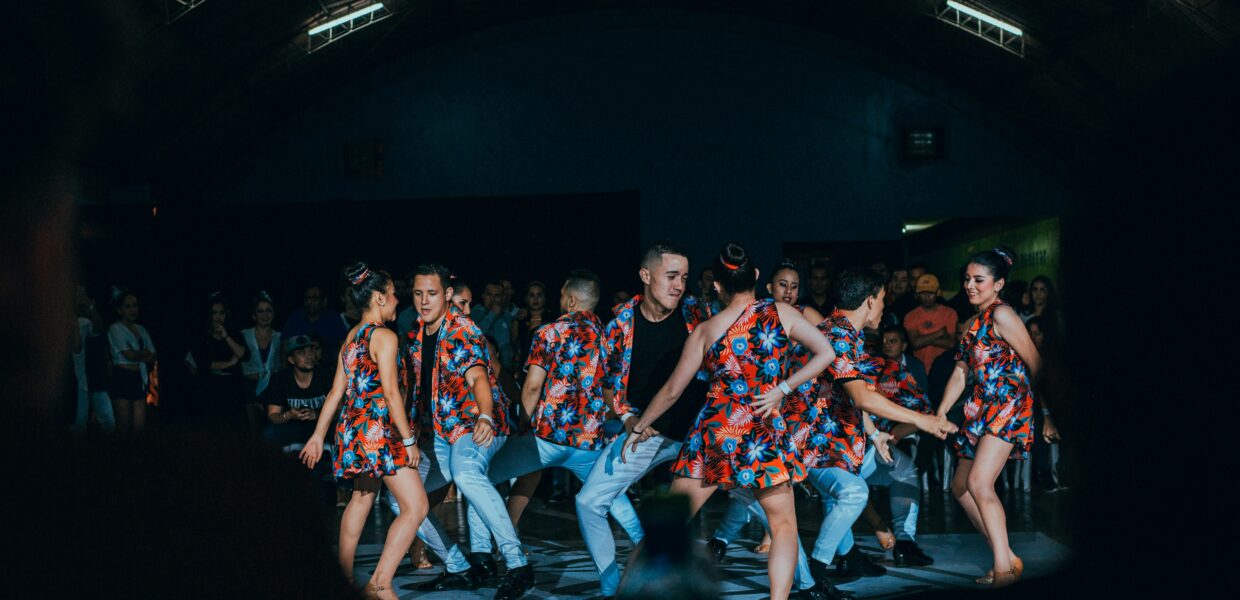Celebrate National Hispanic Heritage Month with the rich rhythms and vibrant culture of Latin music. This special time honors the history and contributions of Hispanic and Latino communities. Deezer takes you on a musical journey that reflects their spirit and diversity. Discover how Latin music unites us all, honoring every unique voice and beat in this lively celebration. Let’s turn up the volume!
Understanding National Hispanic Heritage Month
National Hispanic Heritage Month celebrates the vibrant contributions of Hispanic and Latino communities in the United States. It began as Hispanic Heritage Week in 1968, established by President Lyndon B. Johnson to recognize the achievements of Hispanic Americans. In 1988, President Ronald Reagan expanded it to a month-long celebration, running from September 15 to October 15. This time frame holds special meaning, aligning with independence anniversaries of several Latin American countries, including Mexico, Chile, and Costa Rica.
This month offers a chance to reflect on the rich history and influence of Hispanic communities. Hispanic Heritage Month pays tribute to their contributions in shaping American society. It showcases the impact of Latino culture in various fields, from arts and music to politics and education. It is a moment to acknowledge and appreciate the lasting societal influence that spans generations. It also celebrates the diversity that enriches the American cultural landscape.
Key contributions of Latinos to American culture
Latinos have left an indelible mark on American culture, enriching it with their traditions, talents, and creativity. Their influence reaches far beyond music; it touches art, literature, cuisine, and film. Icons like Celia Cruz, known as the “Queen of Salsa” brought salsa music to the forefront of American popular culture. Her vibrant performances and signature cry of “Azúcar!” became legendary. Similarly, Selena Quintanilla, the “Queen of Tejano” transcended cultural barriers and introduced Tejano music to mainstream audiences.
Their legacies continue to inspire new generations of artists and musicians. From the salsa rhythms of Celia Cruz to the unforgettable voice of Selena, these legends helped shape the musical landscape of the United States. Beyond music, Latino contributions include culinary delights like tacos and empanadas, beloved by millions. Through their art, music, and flavors, Latinos have made American culture richer and more diverse, leaving a legacy that continues to thrive during Hispanic Heritage Month and beyond.
Exploring hispanic culture through music
The role of music in celebrations
Music serves as the heartbeat of Hispanic culture, infusing every celebration with rhythm and joy. It embodies cultural pride and identity, offering a way to honor traditions and connect with roots. During National Hispanic Heritage Month, music takes center stage, uniting communities through shared melodies and beats.
Festivals, concerts, and community gatherings spring to life across the United States. Events like Calle Ocho in Miami or the Fiesta de la Flor in Texas celebrate the sounds of Latin America with vibrant performances. These gatherings feature everything from mariachi bands to salsa orchestras, offering a musical journey through Hispanic heritage. Whether it’s the passionate strum of a guitar or the powerful voice of a mariachi singer, music brings people together. It celebrates the diversity and richness of Latino culture and turns every beat into a symbol of pride and unity.
Influence of Hispanic culture in the U.S.
Hispanic music genres have left a profound impact on the American music scene, it has shaped sounds that reach far beyond the borders of Latin America. Salsa, reggaeton, and bachata have each carved out their place in the mainstream. Salsa, with its energetic rhythms and Afro-Cuban roots, took over dance floors in New York City, while reggaeton’s urban beats reshaped global pop culture. Artists like Daddy Yankee, Bad Bunny, and Karol G have turned reggaeton into a global phenomenon, dominating charts and streaming platforms.
Key moments have spotlighted Latin culture on the world stage, such as Jennifer Lopez and Shakira’s electrifying Super Bowl halftime show. This performance showcased the power and influence of Latin music and made history with its blend of salsa, reggaeton, and Latin pop. Such moments highlight the deep connection between Hispanic music and American culture. This proves that Latin sounds are not just a trend, but an integral part of the musical fabric of the United States.
Popular Latin music genres in the U.S.
Current trends in Latin music
Latin music is more than just a genre—it’s a cultural force sweeping through the American music scene. Today, reggaeton, Latin trap, and regional Mexican music dominate the charts and streaming platforms. Reggaeton, with its infectious rhythm and bass-heavy beats, has evolved from underground clubs in Puerto Rico to global stages. Latin trap, a blend of hip-hop and reggaeton, brings edgy lyrics and urban vibes, capturing the spirit of a new generation.
Bad Bunny, often called the “King of Reggaeton,” has smashed records, becoming the first all-Spanish-language act to top the Billboard 200. Karol G’s blend of reggaeton and pop has made her an unstoppable force, resonating with audiences worldwide. Meanwhile, regional Mexican music sees a surge in popularity, with artists like Peso Pluma bringing corridos and banda into the mainstream. His hits fuse traditional Mexican sounds with modern influences, proving that Latin music is both diverse and evolving.
Diversity in Latin music
Latin music reflects the rich tapestry of cultures within the Hispanic community. From the Caribbean to the Andes, it embodies the rhythms and sounds of diverse regions. The upbeat rhythms of merengue and salsa highlight Caribbean influences, while the haunting melodies of Andean folk music add a mystical touch. This cultural diversity allows Latin music to resonate with listeners from various backgrounds.
Artists continue to push boundaries by blending genres. Rosalía merges flamenco with reggaeton and creates a sound that’s both traditional and avant-garde. J Balvin collaborates with artists across genres, from hip-hop to electronic music, that design songs that cross borders. This blending of styles celebrates the cultural richness of Latin music and demonstrates its power to innovate. Each track becomes a bridge between past traditions and contemporary sounds and makes Latin music a vibrant and ever-evolving art form in the U.S.
Music as a cultural bridge
Music has the power to transcend language and culture, bringing people together in ways that words alone cannot. Latin music serves as a bridge, connecting communities through its universal rhythms and beats. It breaks down barriers, allowing listeners to embrace diverse sounds and stories, even if they do not share the same language. From the catchy beats of reggaeton to the soulful melodies of salsa, Latin music creates a space where cultures meet and mingle.
Global hits like “Despacito” by Luis Fonsi and Daddy Yankee reached listeners in every corner of the world, uniting fans regardless of their backgrounds. Bad Bunny’s music has become a cultural phenomenon, proving that a song’s language does not limit its impact. Latin music’s appeal lies in its ability to convey emotions that resonate universally. It celebrates diversity while fostering a sense of unity among listeners.
Engaging with Hispanic Heritage Month
Participating in events and celebrations
Finding local events to celebrate Hispanic Heritage Month is easy with the right resources. Check community centers, cultural institutions, and social media for concerts, festivals, and art exhibits in your area. Cities like Miami, Los Angeles, and New York host vibrant festivals that showcase Latin music, dance, and food.
For those who prefer to join from home, virtual events offer another way to connect. Platforms like Zoom and YouTube often host online concerts, panel discussions, and dance classes, bringing the spirit of the celebration directly to your screen. Engage in these events to explore the richness of Hispanic culture.
Educational resources
Dive deeper into Hispanic culture with books, documentaries, and online courses that explore the rich history of Latin America. Works like The House on Mango Street by Sandra Cisneros and documentaries such as Latino Americans on PBS provide valuable insights. Online platforms like Coursera offer courses on Latin American history and Hispanic music genres.
These resources help you appreciate the profound cultural contributions of Hispanic communities. Understanding their stories, struggles, and triumphs enhances your appreciation of Hispanic Heritage Month, making the celebration more meaningful and enriching.Wrap up Hispanic Heritage Month with the vibrant sounds that define Latin culture. Discover the perfect blend of timeless classics and fresh hits. Whether you’re in the mood to dance or unwind, these curated playlists bring the essence of Latin music to life. Ready to celebrate? Explore Deezer’s exclusive Latin music tracklists and immerse yourself in the rhythms!
Find out more:






